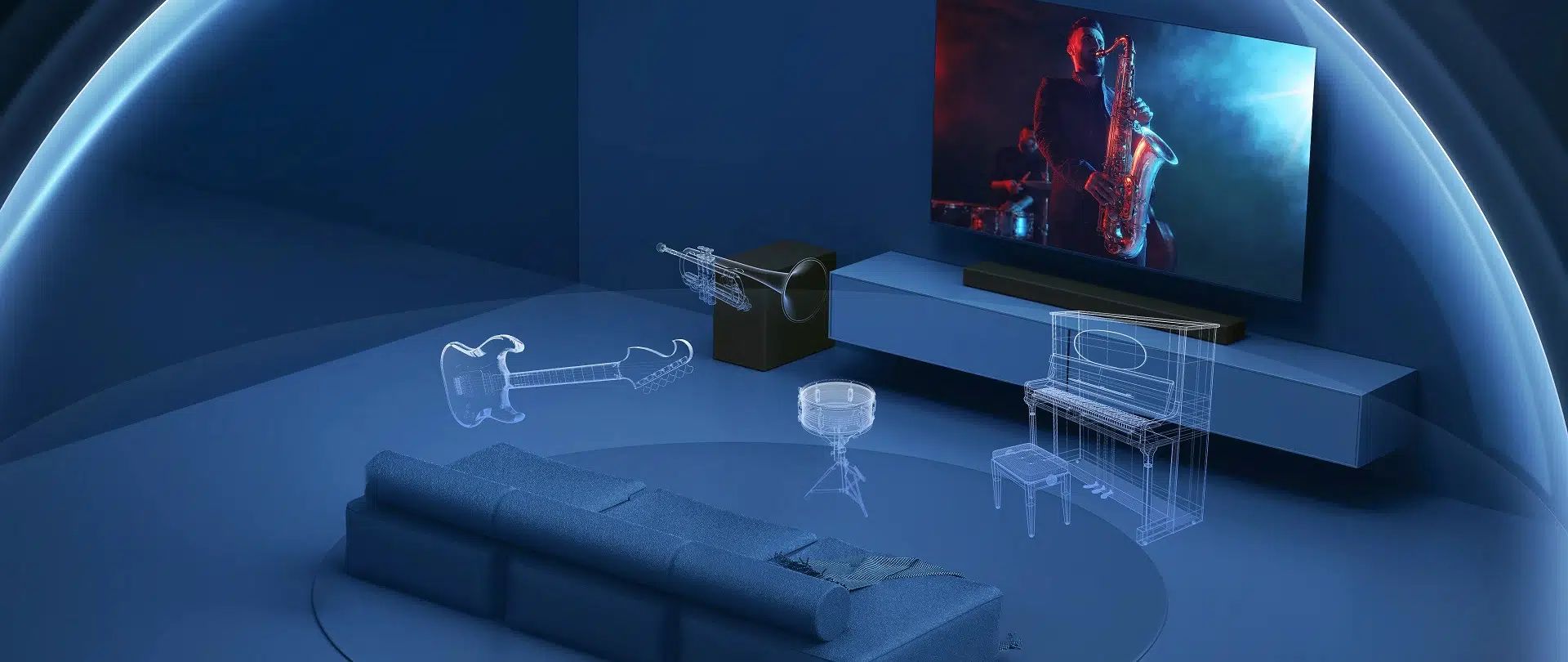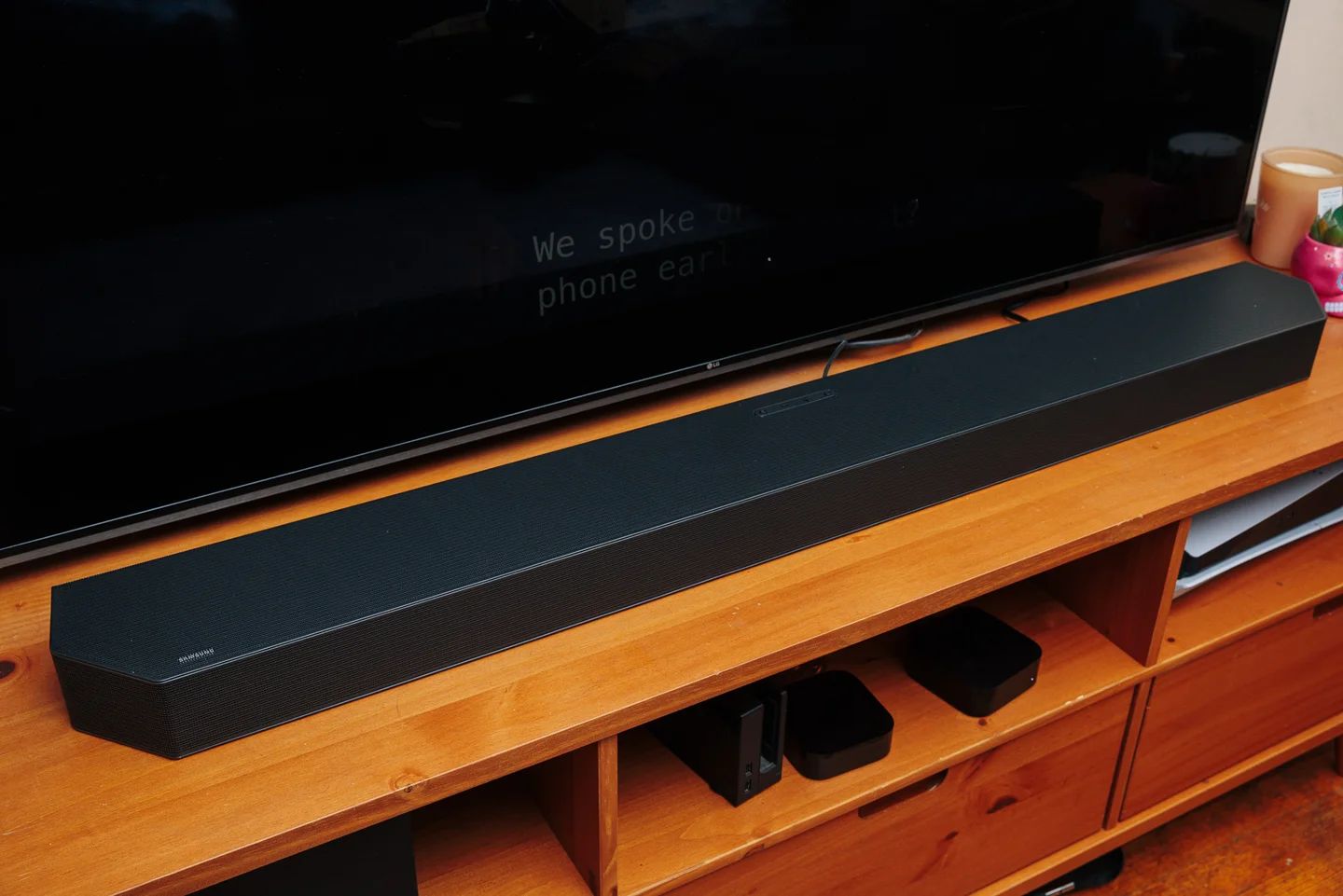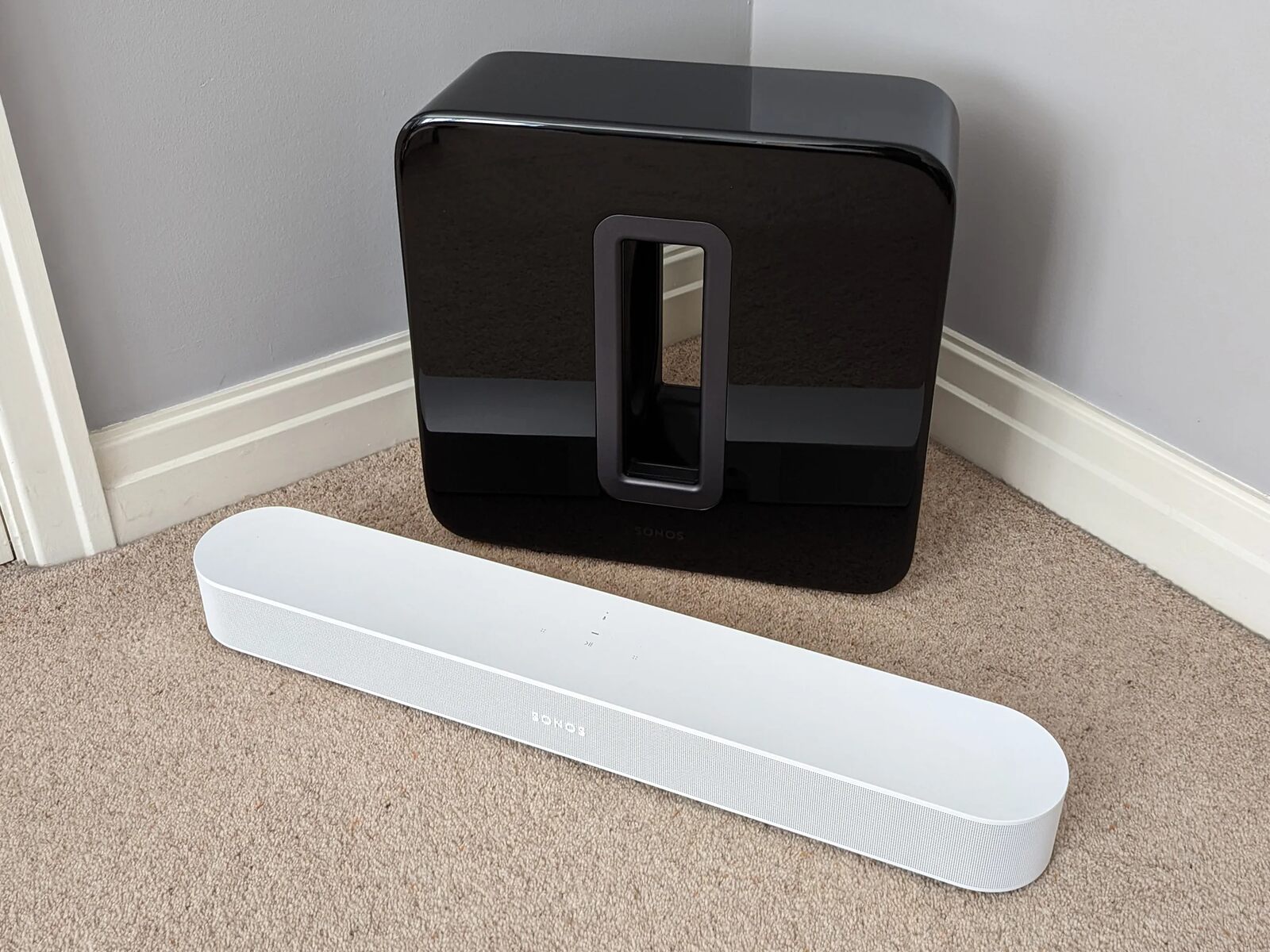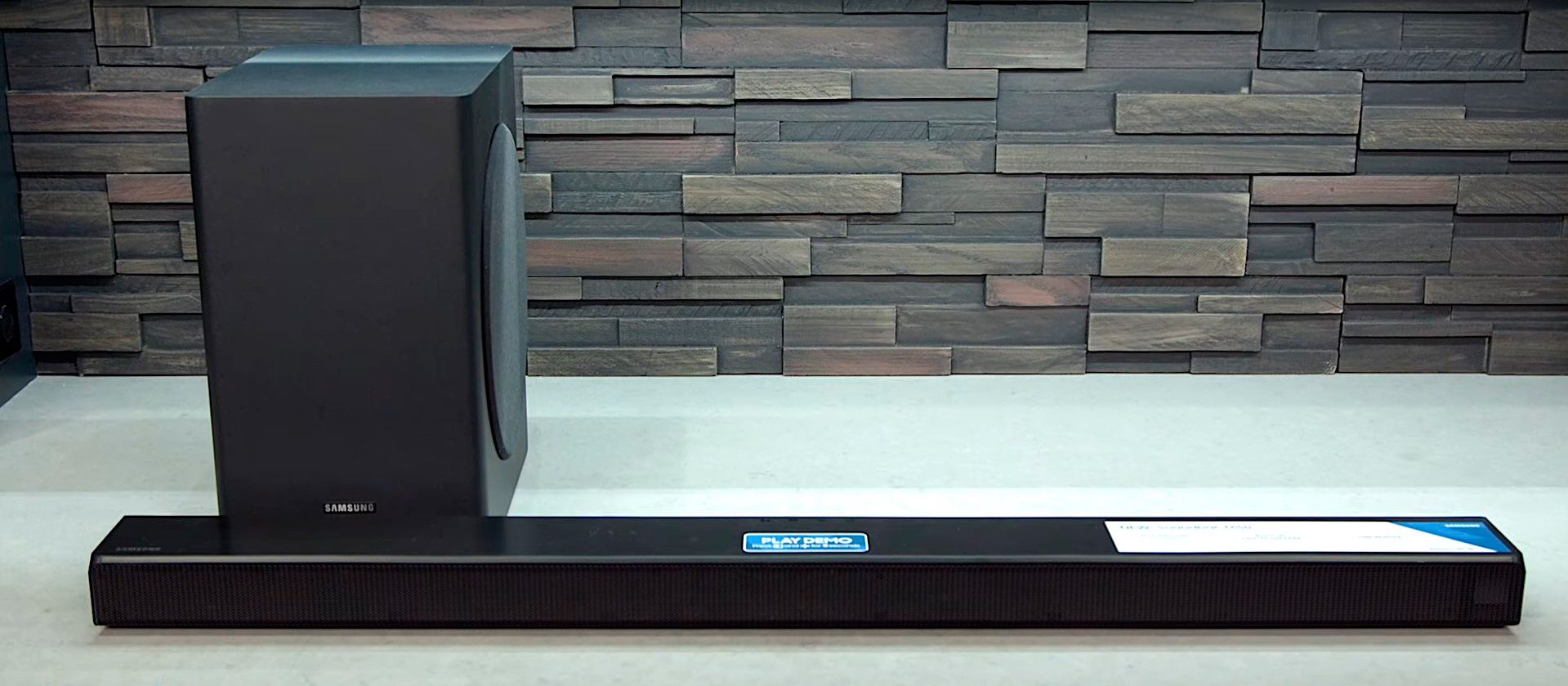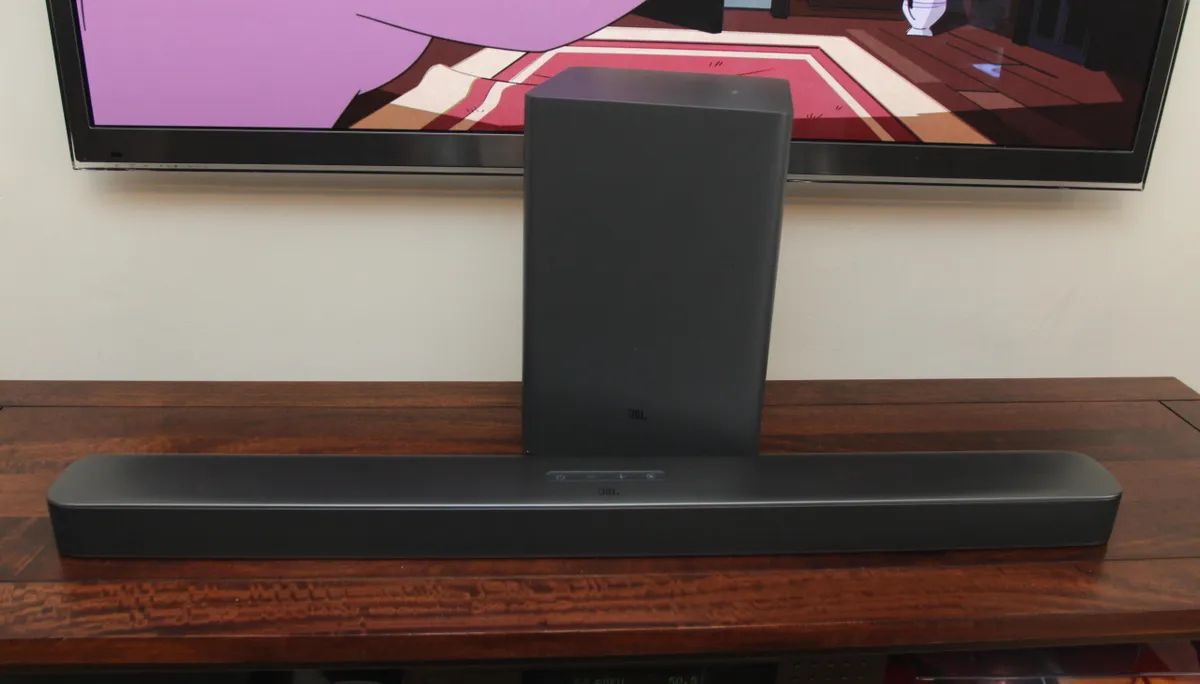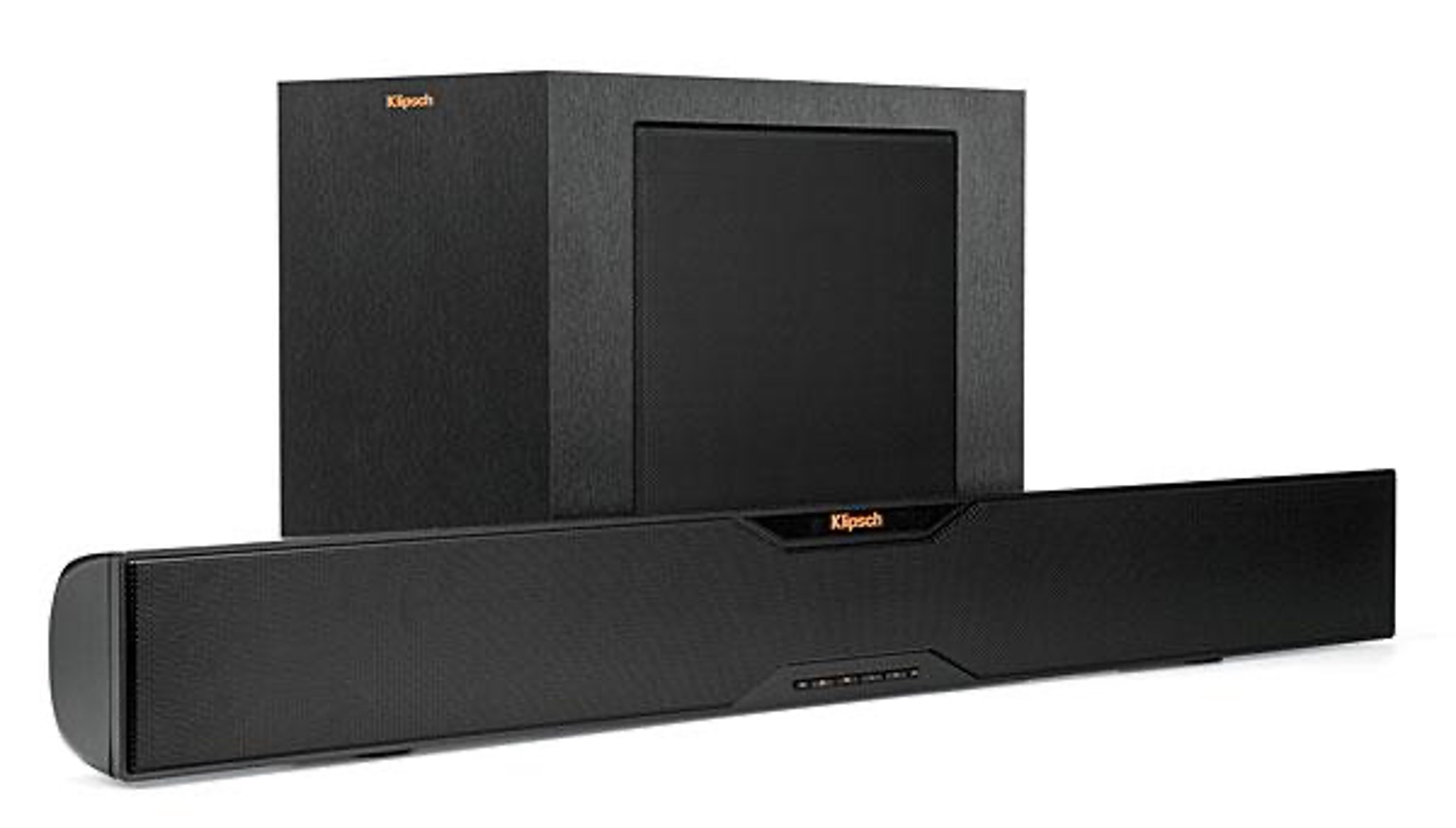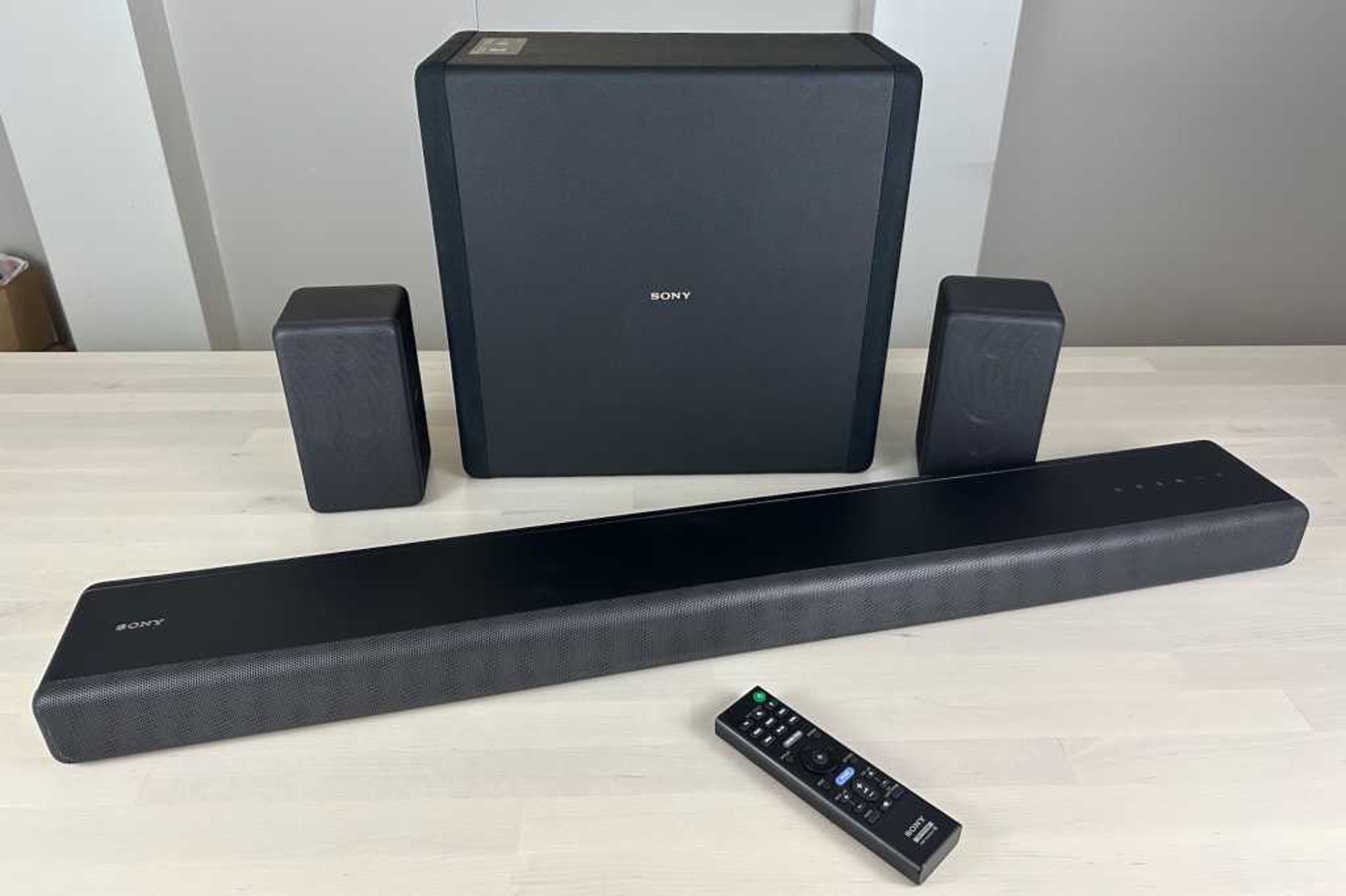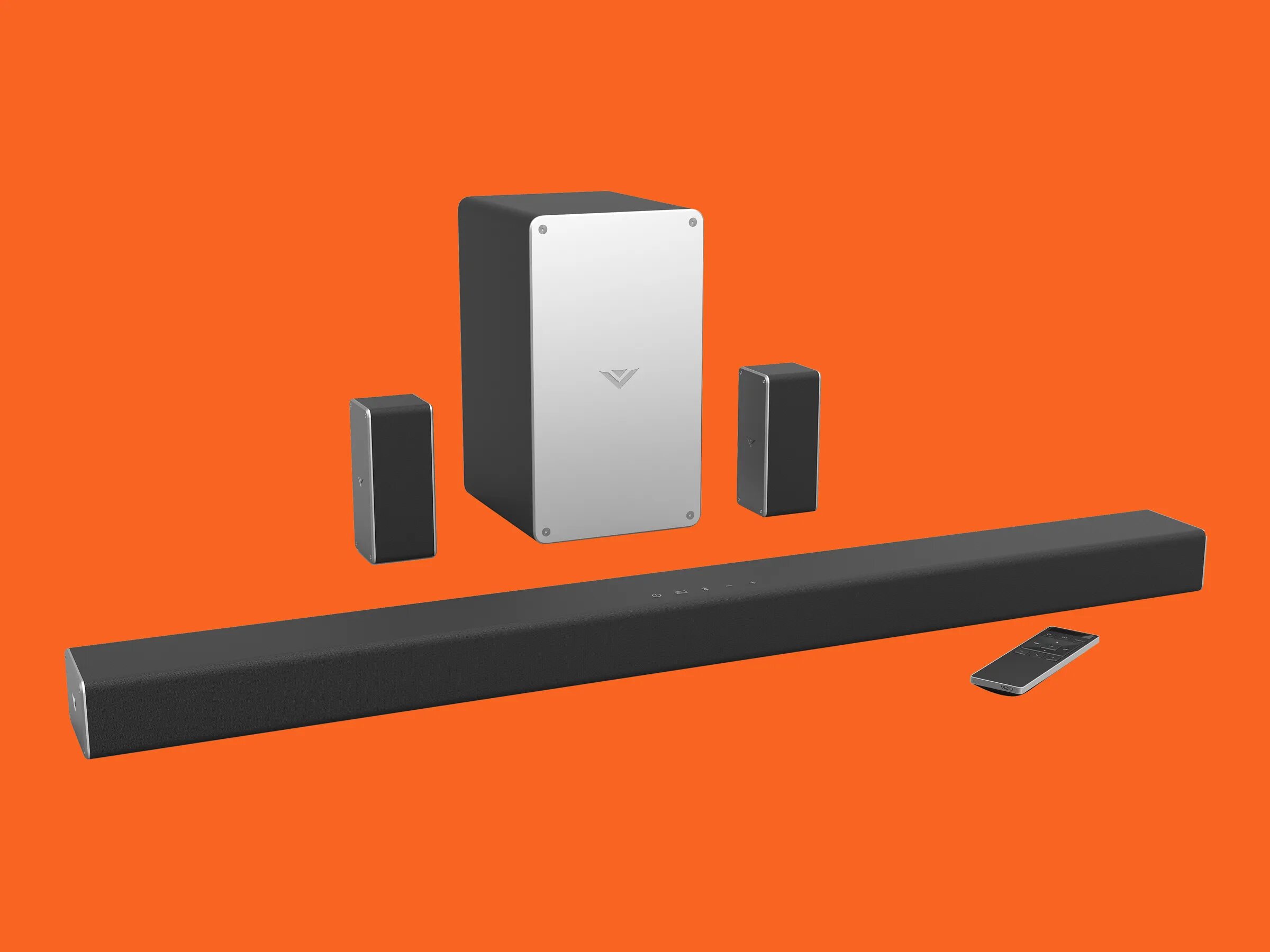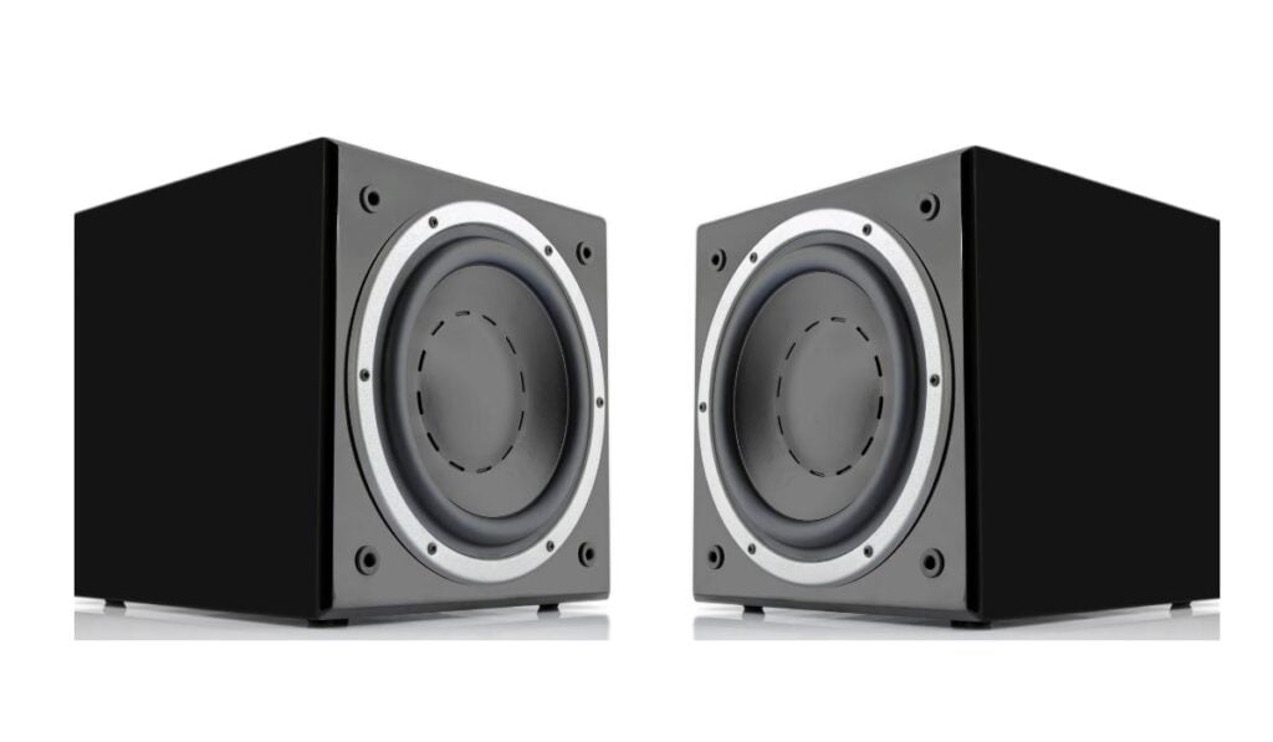Introduction
Welcome to our guide on where to place a soundbar subwoofer! If you’re looking to enhance your home audio setup and enjoy immersive sound, a subwoofer is an essential component. However, finding the right location for your subwoofer can greatly impact its performance and your overall listening experience.
With the increasing popularity of soundbars, which are slim and compact, the subwoofer plays a crucial role in reproducing low-frequency sounds, providing deep and rumbling bass. Placing the subwoofer in the optimal position ensures that you get the full impact of those low-end frequencies, creating a more balanced and immersive audio experience.
In this guide, we will explore the ideal positioning for your soundbar subwoofer and discuss the factors you should consider when choosing a location. We will also explore common placement options and provide tips on testing and adjusting the subwoofer placement for optimal results.
Whether you’re a movie enthusiast, a music lover, or a gaming enthusiast, finding the right placement for your subwoofer will greatly enhance your audio experience. So, let’s dive in and discover the best spot for your soundbar subwoofer!
The Ideal Positioning for Soundbar Subwoofer
When it comes to positioning your soundbar subwoofer, there are a few key factors to keep in mind to achieve the best possible audio performance. The ideal placement will depend on various factors such as room size, furniture layout, and personal preference.
Firstly, it’s important to remember that subwoofers are omnidirectional, meaning they radiate sound in all directions. This characteristic allows for flexibility when it comes to placement options. However, certain positions can optimize the subwoofer’s performance by ensuring better bass response and integration with the soundbar.
One of the most recommended positions for a subwoofer is to place it along the front wall, either directly below or to the side of the soundbar. This arrangement helps to create a cohesive and well-integrated soundstage, with the subwoofer delivering deep bass that complements the soundbar’s audio output.
Another option is to place the subwoofer near the back of the room, facing towards the seating area. This positioning can produce a more spacious and immersive sound experience, especially in larger rooms. However, it may take some experimentation to find the perfect balance between bass impact and overall sound coherence.
If you have a custom cabinet or wall unit specifically designed for your soundbar and subwoofer setup, placing the subwoofer inside can be a great option. This not only helps to conceal the subwoofer but can also provide additional support and stability, preventing any unwanted vibrations or resonances that may affect the sound quality.
Lastly, some enthusiasts prefer placing the subwoofer in a corner of the room. This “corner-loading” technique takes advantage of the room’s natural acoustics and can enhance the bass response. However, it is important to note that corner placement may result in boomy or overpowering bass if not properly balanced with the soundbar and the room’s acoustics.
Remember, the ideal positioning will vary from room to room, so it’s essential to experiment and listen to how the subwoofer interacts with your soundbar and the overall room acoustics. A combination of listening tests and making small adjustments in placement can help achieve the optimal bass performance based on your preferences.
Now that we’ve explored the ideal positioning for your soundbar subwoofer, let’s delve into the various factors you should consider when choosing a suitable location.
Factors to Consider When Choosing a Location
When selecting the perfect location for your soundbar subwoofer, several factors should be taken into consideration to ensure optimal audio performance. These factors will help you make an informed decision and create the best possible listening experience.
Firstly, consider the room size and layout. Larger rooms tend to have more space for sound waves to disperse, allowing for greater flexibility in subwoofer placement. In smaller rooms, you may need to experiment with different positions to achieve the desired balance between bass impact and overall sound coherence.
Next, think about the room’s acoustics. Hard surfaces like wood or tile floors, bare walls, and large windows can create sound reflections and affect the subwoofer’s performance. In such cases, it might be beneficial to add some acoustic treatments like rugs, curtains, or wall panels to minimize reflections and optimize the sound quality.
Consider the location of your seating area. Ideally, the soundbar, subwoofer, and seating should form a balanced triangle. Placing the subwoofer closer to the seating area can enhance the bass experience, as it will be closer to the listener’s ears. However, remember to find the right balance so that the bass doesn’t overpower the rest of the audio.
Take into account the position of other furniture and objects in the room. Large pieces of furniture, like sofas or cabinets, can obstruct the soundwaves and impact the subwoofer’s performance. Avoid placing the subwoofer behind or beneath furniture, as it may result in muffled or boomy bass. If necessary, consider rearranging the furniture or finding alternative placement options.
Electrical outlets and connectivity options are also important factors to consider. Make sure the chosen location allows for easy access to power outlets and ensures a stable connection with the soundbar. Placing the subwoofer near the soundbar can make cable management easier and eliminate the need for long, unsightly cables across the room.
Lastly, consider personal preference and aesthetics. While optimizing audio performance is essential, it’s also important to find a position that fits your preferences and complements the overall room design. Experiment with different placements and listen for the best bass response while considering the visual impact of the subwoofer in its chosen location.
By taking into account these factors, you can make an informed decision when choosing the ideal location for your soundbar subwoofer. Now that we’ve discussed the considerations, let’s explore some common placement options that you can explore for your subwoofer.
Common Placement Options
When it comes to placing your soundbar subwoofer, there are several common options that you can consider based on your room layout and personal preferences. Let’s explore some of these placement options:
- Next to the soundbar: Placing the subwoofer next to the soundbar, whether on the same shelf or stand, is a popular choice. This arrangement ensures that the subwoofer is in close proximity to the soundbar, creating a cohesive and integrated soundstage.
- In a corner: Corner placement is another commonly recommended option for subwoofers. Placing the subwoofer in a corner can take advantage of the room’s acoustics, enhancing the bass response and creating a more enveloping sound experience. However, be mindful of potential boomy bass due to the intensified low-frequency resonances in corners.
- Near the back of the room: If you have a larger room, placing the subwoofer near the back of the room, facing towards the seating area, can provide a sense of spaciousness and immersion. This positioning allows the bass to disperse more evenly throughout the room, creating a more encompassing audio experience.
- In a custom cabinet: If you have a custom cabinet or wall unit designed for your soundbar and subwoofer setup, placing the subwoofer inside can be an aesthetically pleasing option. This placement not only helps to conceal the subwoofer but can also provide additional stability and support, reducing any unwanted vibrations.
- Under a table or desk: If you are limited on space or prefer a discrete setup, placing the subwoofer under a table or desk can be an effective solution. This positioning allows the subwoofer to be out of sight while still delivering the desired bass impact.
- Isolated on an isolation platform: To minimize vibrations and improve bass clarity, consider placing the subwoofer on an isolation platform or specialized isolation feet. These accessories can help reduce resonance transfer to the floor and enhance the overall sound quality.
Remember, every room is unique, so it’s important to experiment with different placement options to find the one that suits your specific room acoustics and preferences. Don’t be afraid to adjust the subwoofer’s position and listen for any improvements or changes in bass performance.
Now that we’ve discussed some common placement options, let’s explore additional considerations for optimizing your subwoofer’s performance, including isolating the subwoofer for optimal bass capture.
Placing the Subwoofer in a Corner
One of the commonly used techniques for subwoofer placement is to position it in a corner of the room. Corner placement takes advantage of the room’s acoustics and can enhance the bass response. However, it’s important to consider the potential drawbacks and make necessary adjustments to achieve the best sound quality.
When placing the subwoofer in a corner, the low-frequency sounds produced by the subwoofer bounce off the walls, ceiling, and floor, creating an immersive and impactful bass experience. The corner placement can amplify the low-end frequencies, resulting in a more powerful and enveloping soundstage.
However, corner placement can sometimes lead to boomy or overpowering bass if not properly balanced. The intensified low-frequency resonances in corners can cause certain frequencies to become emphasized, resulting in an uneven bass response. This can negatively impact the overall sound quality and may overshadow other audio elements.
To overcome these issues, it’s important to experiment with the subwoofer’s placement within the corner. Start by adjusting the distance between the subwoofer and the walls, as well as the distance from the floor and ceiling. Small changes in positioning can have a significant impact on the bass response and overall sound balance.
Additionally, consider using bass traps or acoustic treatments in the corners to reduce excessive resonances. Bass traps are specialized acoustic panels designed to absorb low-frequency sound waves and minimize room modes. By strategically placing bass traps in the corners, you can reduce the potential for boomy bass and achieve a more balanced and controlled sound.
When placing the subwoofer in a corner, it’s also important to ensure that it is properly calibrated and integrated with the soundbar or other speakers in your setup. Adjust the crossover frequency, volume level, and phase settings of the subwoofer to achieve a seamless blend between the subwoofer and the soundbar. This will help to create a cohesive and balanced audio experience.
Remember that every room is unique, and the effectiveness of corner placement may vary depending on the room’s size, shape, and acoustics. As always, take the time to experiment with different positions and make adjustments to find the optimal balance between bass impact, overall sound quality, and room aesthetics.
Now that we’ve explored the placement options for subwoofers, let’s move on to discussing the benefits of placing the subwoofer near the soundbar.
Placing the Subwoofer Near the Soundbar
Placing the subwoofer near the soundbar is a popular option that offers several advantages in terms of audio performance and convenience. This positioning ensures a cohesive and integrated soundstage, allowing the subwoofer to work in harmony with the soundbar for a more immersive listening experience.
When the subwoofer is positioned in close proximity to the soundbar, there is a seamless blending of the audio output from both components. This integration results in a more balanced and coherent sound, with the deep bass from the subwoofer perfectly complementing the audio delivered by the soundbar’s speakers.
Having the subwoofer near the soundbar also simplifies cable management. Since the subwoofer and soundbar are placed in close proximity, you can use shorter cables to connect them. This reduces the chances of cable clutter and makes the setup look more aesthetically pleasing. Additionally, it makes it easier to conceal the cables, further enhancing the overall visual appeal of your home entertainment area.
Another advantage of placing the subwoofer near the soundbar is the ease of synchronization and control. Many soundbars come with wireless subwoofer connectivity options, allowing you to connect the subwoofer effortlessly. This wireless connection eliminates the need for additional cables and simplifies the setup process.
When positioning the subwoofer near the soundbar, consider placing it on the same shelf or stand as the soundbar. This helps to create a compact and visually balanced setup, where the soundbar and subwoofer complement each other both in terms of audio performance and aesthetics. Alternatively, you can place the subwoofer adjacent to the soundbar, ensuring a close proximity for optimal bass impact.
It’s important to note that even when placing the subwoofer near the soundbar, it’s still essential to fine-tune their settings for optimal performance. Adjust the crossover frequency, volume level, and phase settings of the subwoofer to ensure it seamlessly integrates with the soundbar’s output. This will help to create a well-balanced sound across all frequencies and enhance the overall audio experience.
Experiment with different positions and listen for any improvements or changes in sound quality. The precise placement will vary depending on the specific soundbar and subwoofer models, as well as the room’s acoustic characteristics. Trust your ears and make adjustments until you achieve the desired balance between the soundbar and the subwoofer.
Now that we’ve explored the benefits of placing the subwoofer near the soundbar, let’s continue by discussing the option of placing the subwoofer at the back of the room.
Placing the Subwoofer at the Back of the Room
Placing the subwoofer at the back of the room is an alternative positioning option that can create a more expansive and immersive audio experience. While it may not be the most commonly used placement, it can be effective in larger rooms or when aiming for a specific soundstage.
When you position the subwoofer at the back of the room, facing towards the seating area, it allows the low-frequency sounds to disperse more evenly throughout the space. This creates a sense of spaciousness and envelopment, making the audio experience feel more immersive and natural.
Placing the subwoofer at the back of the room can also help to distribute the bass more evenly, preventing any localized “hotspots” that may occur when the subwoofer is placed closer to the soundbar. This can result in a smoother and more balanced bass response throughout the room.
However, it’s important to note that placing the subwoofer at the back of the room may require some adjustment in terms of volume level and crossover settings. Since the subwoofer will be farther away from the listening area, it may need to be slightly louder to maintain an optimal bass impact. Additionally, fine-tuning the crossover frequency ensures a seamless blend between the subwoofer and the soundbar’s speakers.
When considering placing the subwoofer at the back of the room, take into account the room’s layout and furniture placement. Make sure that the subwoofer is not obstructed by large pieces of furniture that can impede the soundwaves. Adjust the position and angle of the subwoofer to ensure it is facing towards the seating area, allowing for the best dispersion and impact.
Keep in mind that the placement of the subwoofer at the back of the room may not be suitable for all setups or room configurations. In smaller rooms, it can result in excessive bass that overwhelms the other frequencies. Additionally, if the soundbar and other speakers are positioned towards the front of the room, placing the subwoofer at the back may create a dissonance in the audio imaging.
As always, it’s essential to experiment with different placements and listen for any improvements or changes in the sound quality. Every room has unique acoustics, so trust your ears and make adjustments to find the placement that delivers the best audio experience based on your preferences and room characteristics.
Now that we’ve discussed placing the subwoofer at the back of the room, let’s move on to exploring the option of placing the subwoofer in a custom cabinet or wall unit.
Placing the Subwoofer in a Custom Cabinet or Wall Unit
If you’re looking for a sleek and discreet setup, placing the subwoofer in a custom cabinet or wall unit can provide a seamless and aesthetically pleasing solution. This placement option not only helps to conceal the subwoofer but also offers additional benefits in terms of stability and sound quality.
A custom cabinet or wall unit specifically designed for your soundbar and subwoofer setup can be an excellent choice. These units are built to accommodate and hide audio components, creating a visually clean and clutter-free entertainment area. By placing the subwoofer inside the cabinet or wall unit, you can maintain a polished and organized look while enjoying enhanced audio performance.
When the subwoofer is placed within a custom cabinet or wall unit, it benefits from the stability and support provided by the structure. This minimizes any unwanted vibrations that can affect the subwoofer’s performance, ensuring clean and distortion-free bass reproduction.
Furthermore, by placing the subwoofer inside a cabinet or wall unit, you can effectively isolate it from other audio components and furniture. This isolation helps to prevent sound interference and resonances, resulting in a more accurate and focused bass response. It also allows you to control the subwoofer’s sound projection and direct it towards the listening area for optimal impact.
When considering this placement option, ensure that the custom cabinet or wall unit has proper ventilation to prevent overheating of the subwoofer. Adequate airflow is essential to maintain the subwoofer’s longevity and prevent any audio performance issues caused by excessive heat buildup.
It’s worth noting that custom cabinets or wall units can vary in design and construction. Take into account the internal dimensions and materials used, as they can also affect the subwoofer’s performance. Opt for units with acoustically transparent materials or built-in sound absorption panels to maintain the subwoofer’s performance integrity.
Additionally, consider the accessibility of the subwoofer within the cabinet or wall unit. You may need to adjust settings or access physical controls on the subwoofer occasionally. Ensure that there is enough space and ease of access for any necessary adjustments or maintenance.
Overall, placing the subwoofer in a custom cabinet or wall unit offers a practical and visually appealing solution for your home audio setup. It allows for seamless integration, improved stability, and enhanced sound quality, all while maintaining a clean and aesthetically pleasing living space.
Now that we’ve explored the option of placing the subwoofer in a custom cabinet or wall unit, let’s move on to discussing the importance of isolating the subwoofer for optimal bass capture.
Isolating the Subwoofer for Optimal Bass Capture
Properly isolating the subwoofer is crucial for achieving optimal bass capture and maintaining the overall sound quality. Isolation helps to minimize vibrations, reduce interference, and ensure that the subwoofer delivers clean and impactful bass frequencies without any unwanted resonances.
Vibrations from the subwoofer can transfer to the surrounding surfaces, causing resonance and potentially distorting the bass output. To prevent this, consider placing the subwoofer on an isolation platform or using specialized isolation feet. These accessories help absorb vibrations and minimize their transfer to the floor or other objects within the room.
An isolation platform is a dedicated surface that decouples the subwoofer from its surroundings. It typically utilizes materials with vibration-dampening properties, such as foam or rubber. Placing the subwoofer on an isolation platform reduces the transmission of vibrations, resulting in cleaner and more accurate bass reproduction.
Isolation feet or pads can also be used to achieve similar results. These small feet or pads are placed between the subwoofer and the surface it sits on, providing a barrier that absorbs vibrations. Isolation feet can help reduce unwanted resonances, prevent rattling, and improve the overall bass clarity.
In addition to reducing vibrations, consider the subwoofer’s placement in relation to other objects and furniture. Avoid placing the subwoofer on top of or in direct contact with unstable surfaces or objects that can resonate or vibrate. These can include lightweight stands, flimsy shelves, or furniture with loose parts.
When positioning the subwoofer, it’s also essential to provide clearance around it. Avoid placing the subwoofer too close to walls, corners, or nearby objects, as this can lead to reflections and potential interference with the bass frequencies. Leave some space around the subwoofer to allow for proper airflow and minimize any obstructions that could affect the sound output.
Lastly, consider the room’s acoustics and how it may influence the subwoofer’s performance. Hard surfaces like bare walls, glass windows, and wood or tile floors can cause reflections and affect the overall bass response. Adding some acoustic treatments, such as curtains, rugs, or wall panels, can help reduce reflections and improve the accuracy of the bass reproduction.
By isolating the subwoofer and paying attention to its placement, you can ensure that it operates optimally and delivers the best possible bass response. Reduced vibrations, minimized resonances, and proper airflow all contribute to a cleaner and more impactful bass experience.
Now that we’ve discussed isolating the subwoofer for optimal bass capture, let’s explore the importance of testing and adjusting the subwoofer placement for the best results.
Testing and Adjusting the Subwoofer Placement
Once you have considered the various placement options for your subwoofer, it’s essential to test and adjust its position to achieve the best possible sound performance. Testing and making small adjustments can significantly impact the bass response and overall audio experience. Follow these steps to optimize your subwoofer’s placement:
1. Experiment with placement: Start by placing the subwoofer in different locations within the room, following the guidelines discussed earlier. Begin with the recommended positions, such as near the soundbar or in a corner, and then try different positions to find the optimal spot that effectively balances bass impact with overall sound coherence.
2. Listen for bass quality: Once the subwoofer is in place, play various types of audio content that have a significant bass presence, such as movies with intense action scenes or music with deep low-frequency elements. Pay attention to the quality, depth, and clarity of the bass. Listen for any signs of boomy or muffled bass, as well as any inconsistencies in the frequency response.
3. Adjust subwoofer settings: Use the subwoofer’s control settings to fine-tune its performance. Adjust the crossover frequency, which determines the point at which the subwoofer starts playing bass frequencies. Additionally, modify the volume level and phase settings to achieve a seamless blend between the subwoofer and the soundbar or speakers.
4. Make small changes: When testing the subwoofer’s placement, even slight adjustments can have noticeable effects. Move the subwoofer a few inches at a time or try angling it slightly to achieve the desired bass response. Be patient and take the time to listen and evaluate the changes before making further adjustments.
5. Consider room acoustics: Take into account the characteristics of your room, such as its size, shape, and acoustics. Hard surfaces can create reflections that impact the bass quality, while soft materials can absorb sound. Experiment with acoustic treatments, such as rugs, curtains, or wall panels, to improve the overall sound balance and bass accuracy.
6. Conduct listening tests: Engage in critical listening by sitting in various positions within the listening area and evaluating the bass response. Move around the room and assess if the bass sounds consistent and well-integrated from different listening positions. This will help ensure a balanced sound experience for everyone in the room.
7. Trust your ears: Ultimately, rely on your ears as the final judge. Everyone’s perception of sound is subjective, so trust your own judgment and adjust the subwoofer’s placement until it delivers the desired bass impact and sound quality that aligns with your preferences.
Remember, the process of testing and adjusting the subwoofer’s placement is iterative. It may take some time and patience to find the optimal positioning that caters to your room’s specific characteristics and your audio preferences. Don’t hesitate to experiment and make small changes to achieve the best possible audio performance.
Now that we’ve discussed the importance of testing and adjusting subwoofer placement, we can conclude our guide on where to place a soundbar subwoofer.
Conclusion
Properly placing your soundbar subwoofer plays a significant role in achieving optimal audio performance and enhancing your overall listening experience. By considering factors such as room size, acoustics, furniture layout, and personal preferences, you can find the ideal position for your subwoofer.
The ideal placement for a soundbar subwoofer can vary depending on the specific room and setup. Common options include placing the subwoofer next to the soundbar for a cohesive soundstage, in a corner to take advantage of room acoustics, near the back of the room for a more spacious sound experience, or inside a custom cabinet or wall unit for a discreet setup.
Isolating the subwoofer from vibrations and optimizing its integration with other components are equally important. Using isolation platforms, adjusting settings, and considering the room’s acoustics can greatly enhance the bass response and overall sound quality.
Remember to test different placements, make small adjustments, and conduct critical listening tests to find the best position for your subwoofer. Trust your ears and fine-tune the subwoofer’s settings until it delivers the ideal bass impact and sound balance that suits your preferences.
Placement options will vary depending on individual room characteristics, equipment, and personal preferences. Take the time to experiment, listen, and adjust to achieve the optimal audio performance that will bring your movies, music, and games to life.
Now that you have a better understanding of where to place your soundbar subwoofer, you can create a more immersive and enjoyable audio experience in your home entertainment space.







